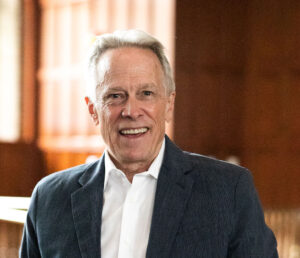A good friend asked me my thoughts on the concept of “commitment” recently. She asked me if commitment sometimes blinds us rather than serves us (it does), and if we sometimes get stuck in its grip (we do). I want to first say thank you to ‘Carol’ for asking! And then I’d like to share my response with you as well.
You see, we used to talk about commitment as part of a willingness triad … of confidence, commitment and motivation all working together – and wired ‘in-series’ like Christmas tree lights that when one goes out, the whole string goes out. But Paul Hersey used to always tell me that when I’m not sure, or if I don’t agree, that I should craft an operational definition that works for me. Let me do that now.
I believe commitment can be defined as “pledging or engaging oneself”. I define commitment as a “pledge, promise or obligation”, and I’ve found that commitment – this pledge – is actually the product of motivation and confidence:
- Motivation drives us to either the satisfaction of desire … or the avoidance of negative consequence. If you’re interested, take a look at https://explorable.com/16-basic-desires-theory. It’s really good stuff as to the ‘why’ behind some of our actions.
- Self-Confidence then affects how we go about satisfying desires. Some of us aren’t so clear or as adept at going after what we want as others might be, or we’re often more comfortable pursuing one desire over another. But given confidence, we freely move toward a positive consequence, with insecurity – we tend to move away from an imagined negative consequence. We can’t help it.
With the right mix of motivation and consequence then, we make the ‘pledge’ (even if we might actually be quite delusional). The problems compound when motivation and confidence shift over time (they always do), and then our commitment changes as a result. It doesn’t matter if the commitment is to a person, job, place or thing … it will not be static. There are predictable variations in our commitment to partners over time, or to career decisions or to matters of faith. That’s why we do get blind, stuck or confused – or all three at once. In my personal life, I just try to be a first-class noticer of others – and to fight the urge to either judge someone, or to place their monkeys under my care. I’m not always successful.
But as a practicing leader and coach, I can do more. Let’s do something different – we can’t help but get better:
- Take inventory – pick two or three desires that you currently pursue through your leadership practice. Assess on a scale of one to ten how well it’s working for you, and then find one personal change you might make to stay on track or get un-stuck.
- Then reach out to another – work with one of your team members to help them to identify what might drive them to succeed at work. Then guide them in making their own plan, and make a promise to be there to help them get un-stuck when the time comes.
You won’t always be successful, but you’ll be glad you tried. You will be appreciated for it.
-Don Brown
don@donbrown.org
Don Brown dedicates his career to ‘helping people with people’ in leadership, sales and customer service. Bilingual and experienced at the executive and line-level alike, you see the results of his work across dozens of industries, including brewing, automotive, airline, banking and medical equipment.
Speaking, writing, coaching and selling to the best – Ford Motor Company, Anheuser-Busch, United Airlines, Harley-Davidson, Jaguar Cars, Hilton Hotels and many, many more – Don takes great pride in long-standing customer relationships (some running well over twenty years).


